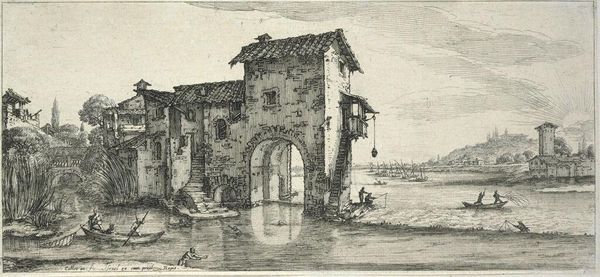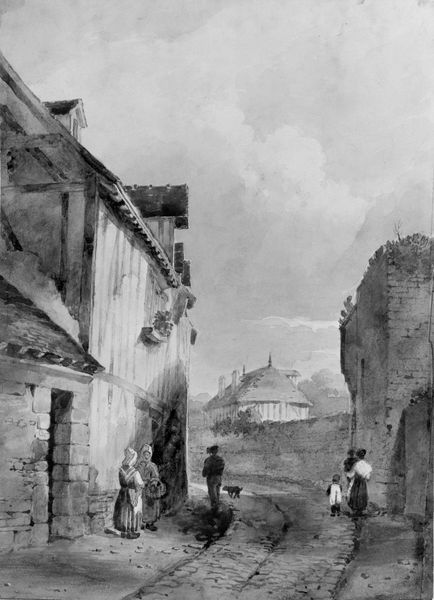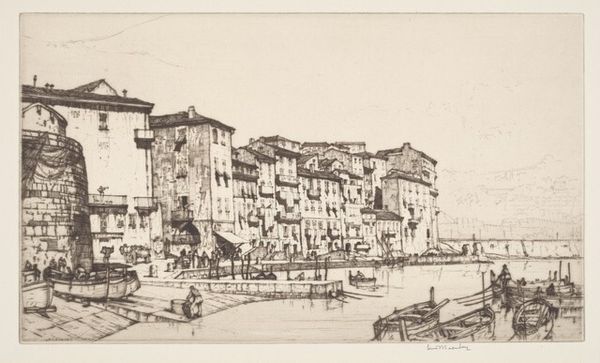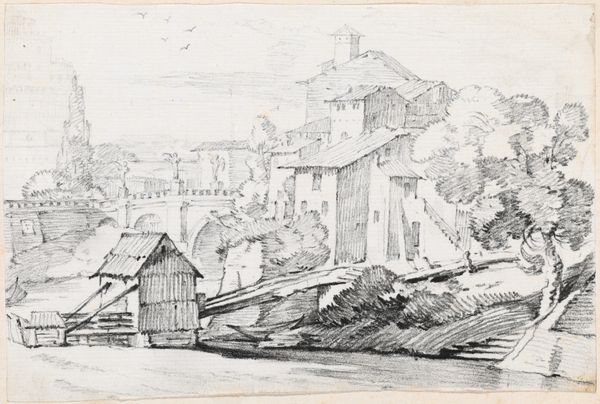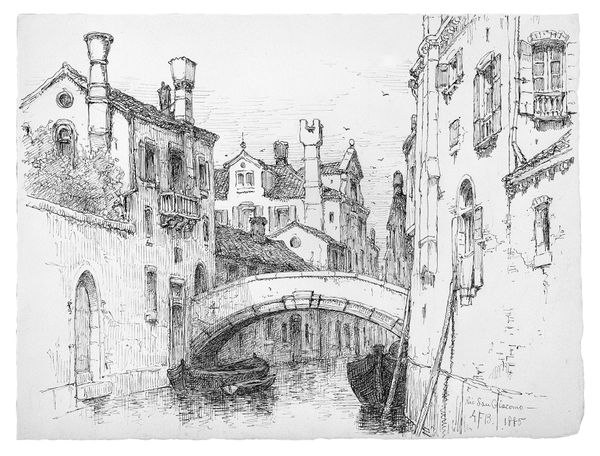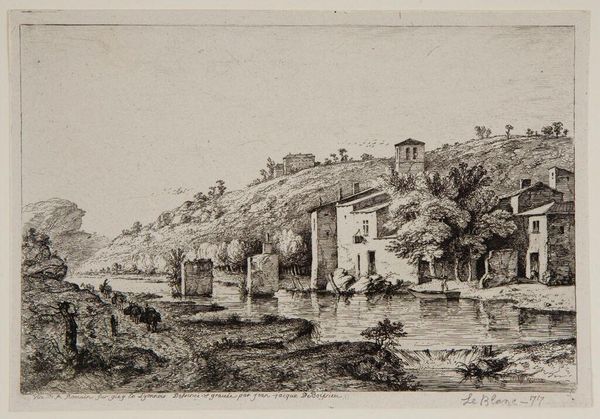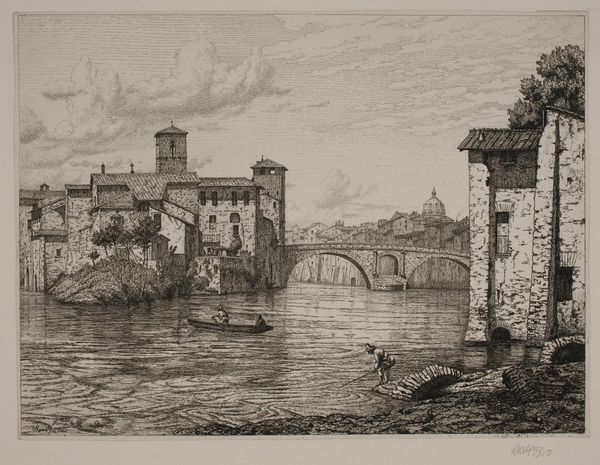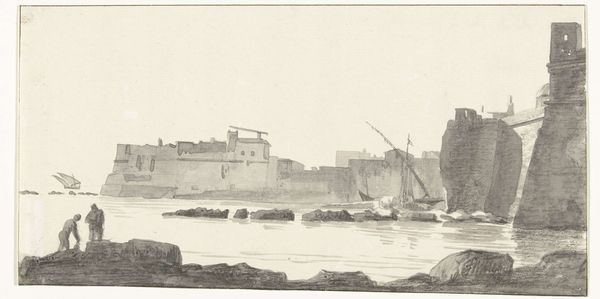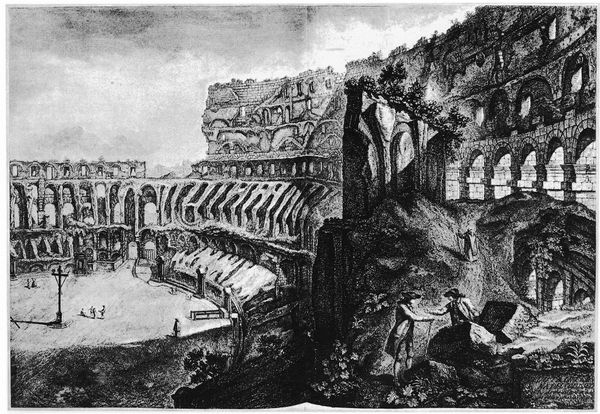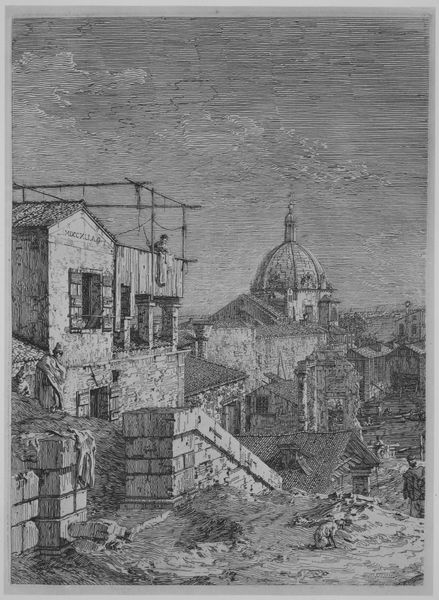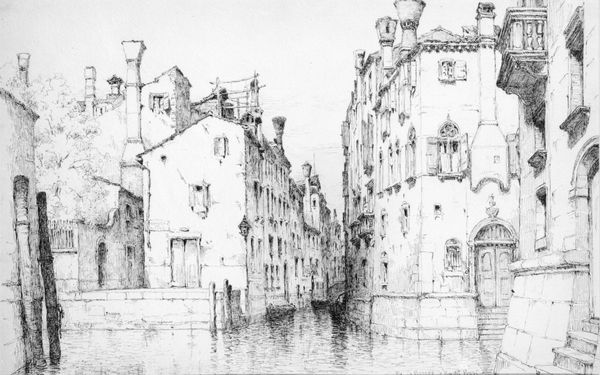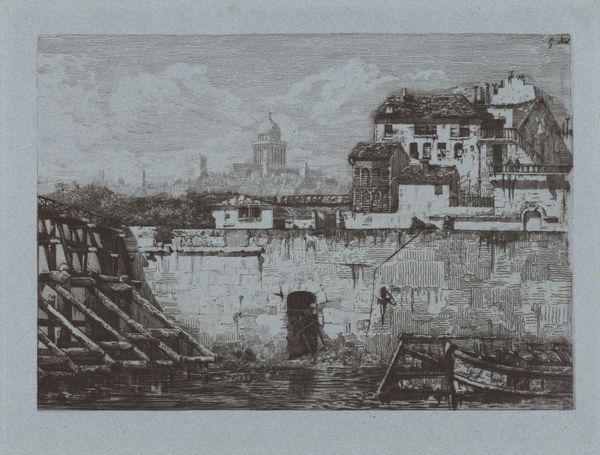
drawing, paper, ink
#
drawing
#
landscape
#
paper
#
ink
#
romanticism
#
cityscape
#
academic-art
Copyright: Public domain
Curator: Looking at Mikhail Lebedev's "Rome in the Morning," crafted in 1835 using ink on paper, I'm immediately drawn to the way he's captured the Roman cityscape with such delicate lines. There's a palpable stillness, a quiet grandeur. Editor: It's interesting you say stillness. What strikes me first is actually the density of the image—a very material Rome. I mean, you feel the weight of history bearing down from every stone and roof. But also who is invited to participate in this morning stillness and from where? Curator: True, the density definitely adds to the mood. However, consider the spire. The church could be the anchor of this imagery as much as a feeling of bearing down. Stillness doesn't automatically suggest peace, does it? It speaks to a quietude, an expectant pause before activity awakens. The cityscape seems to almost breathe there in its monochrome tonality, promising warmth, energy, an anticipation. It calls me back to classical romanticism. Editor: I think what’s potent here is less about that expectant promise of classicism and more about an actual document of place that carries so much colonial and religious legacy. This ink drawing shows, quite literally, the lines of power structuring Rome's architectural identity at the time. And, again, the composition invites only a very particular gaze – there are bodies missing that must surely exist at any dock front dawn. What do you see in this symbol-laden absence? Curator: You raise such an important perspective! As you say, symbols—those often overlooked—are doing potent cultural work that needs unveiling and examination. If this piece doesn't fully engage with these legacies that trouble you—perhaps it can spark deeper reflection about whose stories are overlooked or rewritten by cultural visual artifacts like it. Editor: Right, artworks like these can serve as incredibly useful touchstones when we start interrogating the colonial gaze and narrative-shaping through selective visibility that’s happening right now too! What we see and what is included tells as potent a story as what is rendered and elevated by art practices themselves. Curator: I'm glad we have been able to sit and engage so deeply with this perspective in relationship to "Rome in the Morning." Editor: Likewise! What seems still may provoke the most generative conversation.
Comments
No comments
Be the first to comment and join the conversation on the ultimate creative platform.
